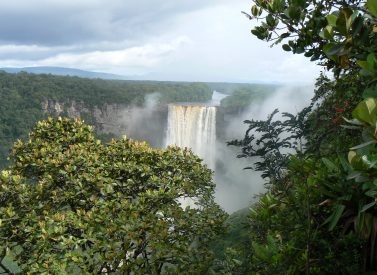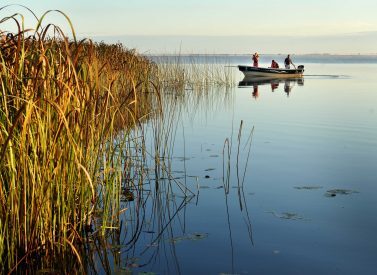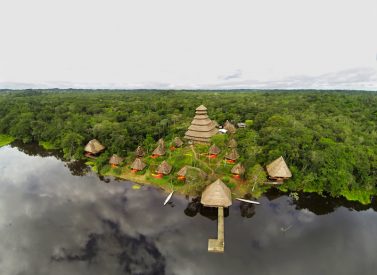Animal Wildlife Guide for Bolivia’s Madidi National Park
 by Tom Shearman on 22nd December, 2022
by Tom Shearman on 22nd December, 2022
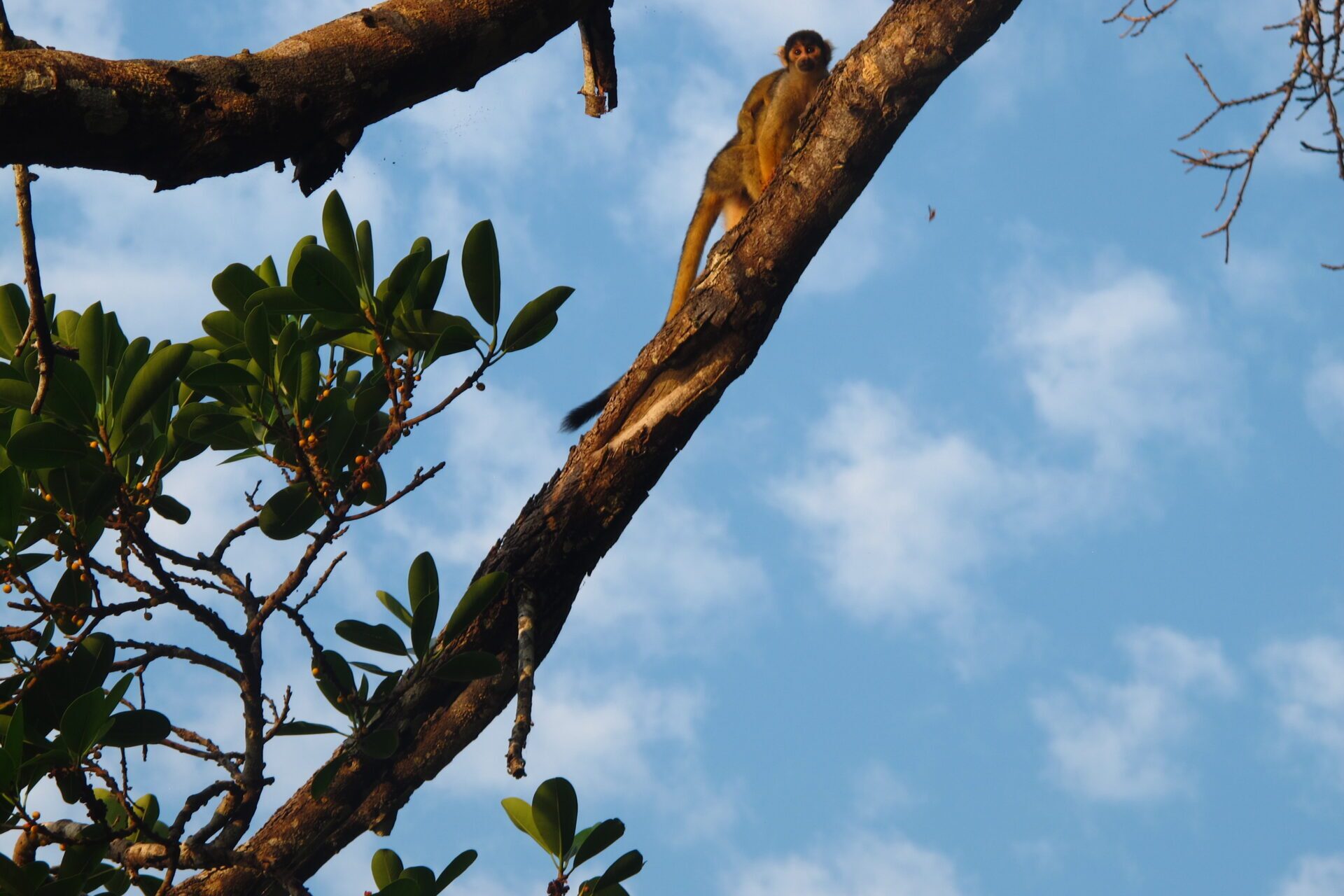
The steamy Amazon rainforest is the world’s most incredible living laboratory, a biodiversity hotspot and home to thousands of unique species.
Land-locked Bolivia is home to unique and varied Amazonian wildlife. Just over half of the country is rainforest, with two-thirds considered primary rainforest.
Bolivia’s most important jungle area is Madidi National Park, where jaguars, pink river dolphins, and macaws are but a few of the region’s iconic and fantastic fauna. In fact, Madidi National Park animals are the biggest draw to visitors.
Let’s look closely at Madidi’s biodiversity and the indigenous communities that help protect the region. You’ll also find tips on when to visit and what to take.
Madidi National Park’s Biodiversity Explained
Bolivia’s Madidi National Park was established in 1995, creating a conservation area spanning 7,320 square miles (18,958 square kilometres).
Madidi’s biodiversity is astounding. The national park is known to be home to the following:
- 272 species of mammals
- 496 species of fish
- 213 species of amphibians
- 1,254 species of birds
- 204 species of reptiles
- 1,000+ species of butterflies
- 20,000+ species of plants
- 120,000+ species of insects
It’s Madidi’s contrasting topography that helps to make it one of the most diverse Amazon rainforests. Much of it is untouched wilderness.
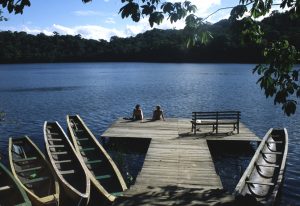
Where Is Madidi National Park?
Madidi National Park is in the upper Amazon river basin of northern Bolivia, close to Peru’s and Brazil’s borders. The park, together with the nearby Manuripi-Heath, Apolobamba, and Manu Biosphere Reserves (Peru), forms one of the world’s largest protected areas.
Andes mountains and rainforests form part of Madidi National Park, boosting its biodiversity. Conservations range from 180 to 5,760 metres above sea level (590-18,897ft). There are Yungas — tropical and subtropical forests between the Andes and the lowland forests — plus montane dry forests, where grasslands turn to scrub.
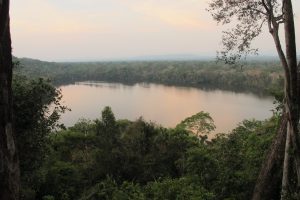
What Mammals Can I See in Madidi National Park?
With at least 272 species of mammal recorded living in Madidi, it’s a wildlife hotspot. The jungle is home to big-ticket animals like jaguars, pumas, sloths, and spectacled bears, which the visitor can hope to spot with patience.
There are many species of monkeys bouncing through the verdant jungle trees, including:
- capuchin monkeys
- howler monkeys
- marmosets
- night monkeys
- saki monkeys
- spider monkeys
- squirrel monkeys
Many monkeys are inquisitive, to a point, and may leap around the foliage to get a look at visitors before they bound off noisily on their business — unforgettable.
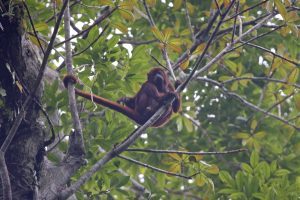
What Animals Live in Madidi National Park’s Rivers?
The big river mammals are a massive attraction in Madidi. The waterways are a habitat for river otters. Then there are the stars; pink river dolphins. These dolphins have a remarkable pink tint to their skin, thought to form as they age and pick up battle scars.
Under a guide’s discretion, people can swim in the Amazon waters where the pink river dolphins live, a truly memorable experience.
The world’s largest rodent, the capybara, is often sighted along the riverbanks, as are the caimans that hunt them. Keep an eye out for the anaconda; it’s not unknown that adult anacondas consume caiman, deer, and capybara. Females may even eat male anacondas during the breeding season.
Some visitors try their hand at fishing for piranhas in rivers, and sports fishers fancy the golden dorado as their top prize. This enormous, gold-coloured fish is often likened to a salmon — it’s not a salmon — and has jaws rumoured to be as powerful as a pit bull’s bite.
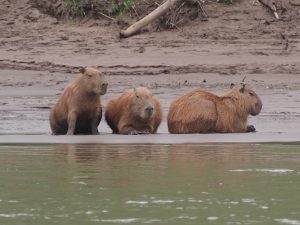
What Bird Species Can I See in Madidi National Park?
It’s thought Madidi houses around 14% of the world’s total bird species.
There are several species of iconic macaws, from scarlet to blue-and-yellow to red-and-green macaws. A remarkable experience is watching the squawking macaws flying home to roost as the sun sets in the Amazon rainforest.
Several species of hummingbirds, including the speckled hummingbird, Gould’s Inca, and Violet-headed hummingbirds, are among those to see. Lovers of prehistoric-looking animals will love the hoatzin or ‘stinky bird’ that is wonderful to look at: from a distance. There are also toucans, herons, and potoos.
Serious birdwatchers can look for hard-to-spot Antpittas and shrikes or critically-endangered species such as Royal Cinclodes and vulnerable Tinamous.
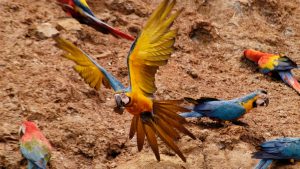
What Flora Can I See in Madidi National Park?
Bolivia’s Amazon rainforest is full of thousands of fascinating flora and fauna. Orchids, heliconias, and any number of gorgeous flowers line hiking trails.
Kapok trees, rubber trees, and bromeliads abound. Look out for giant trees, with some growing more than 50 metres (165ft) high into the canopy. Plants compete for sunlight in the shady Amazon rainforest, creating a tremendous amount of leaf litter.
Look on the ground, and you’ll spot thousands of industrious leaf-cutter ants taking leaves into their nests. Here, they cultivate a fungus from the leaves on which they feed.
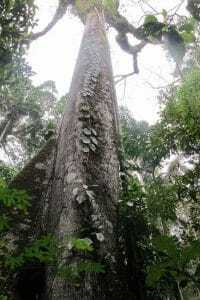
When Is the Best Time to Visit Bolivia’s Madidi National Park?
Madidi National Park’s diverse topography, from steamy lowlands to frigid mountain regions, brings varied weather, as one would expect. Most people head to the tropical lowlands with hot and humid weather year-round.
There are two distinct seasons in Madidi, easily identified as the rainy and dry seasons.
Madidi National Park’s Dry Season
Madidi’s dry season runs from April to October. The dry season is the best time to visit Madidi National Park.
While it can always rain in the rainforest, days are often dry, meaning fewer mosquitoes and more animals attracted down to the river to drink. The dry season means animals are more active, offering better wildlife-spotting opportunities.
Madidi National Park’s Wet Season
Madidi’s wet or rainy season runs from November to March, with the heaviest rains in January and February.
Unsurprisingly, this is a very wet time in the rainforest. It may not rain every day, but visitors should expect precipitation and hiking trails to be muddy. Animals look for shelter when it rains and may not need to venture to the water’s edge to drink, making sightings trickier.
There will be fewer visitors in the rainy season, but allow extra days if heavy rains cause flight delays or boat launch problems.
Which Indigenous Communities Live In Madidi National Park?
Madidi National Park is inhabited by 46 indigenous communities from six different tribes. Some Quechan-speaking locals have moved to the area from the Andean highlands.
Indigenous communities include the Tacana, Ese Ejja, Mosetén, and Tsimané. Some communities do not wish to have contact with the rest of the world, including the Toromona people.
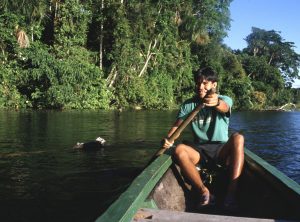
How Do I Travel to Madidi National Park?
Rurrenabaque is the access point for travellers heading to Madidi National Park.
Most visitors to Madidi National Park take one of the daily scenic flights (40 minutes) from La Paz to Rurrenabaque. The planes fly over the Cordillera Real, usually early in the morning, offering stunning mountain views.
There are some long and often uncomfortable bus journeys to Rurrenabaque. Take a La Paz to Villa Fátima bus, then take another bus to Ixiamas, making a final connection to Rurrenbaque (allow 20-24 hours). Much of the journey is on unpaved, winding roads that climb the Cordillera Real before descending into the muddy rainforest.
From this Amazon town, people take a boat upriver towards the mountains or head down the Yucuma River towards the pampas region.
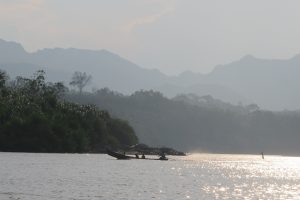
Where Is the Best Place To See Wildlife in Madidi National Park?
There are two principal areas in which to see wildlife in Madidi.
To the east of Rurrenabaque lies the verdant Amazon rainforest with several accommodation options. Some are more basic than others. Our favourite is the community-run Chalalan Eco-lodge, staffed by local Quetchua-Tacana people.
The Chalalan area features over 11.6 miles (30 km) of trails which expert guides follow to show you the best of the area.
Those who wish to see pink river dolphins need to head down the Yungay river towards the pampas. Several lodges, some more basic than others, mainly cater to the backpacker market.
Some people stay in Rurrenabaque, which has some small, clean, but rudimentary hotels, and take day trips up and down the rivers.
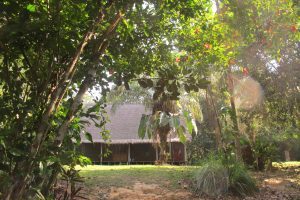
What Kit Do I Need To See Wildlife in Madidi?
A yellow fever vaccination and anti-malaria pills are recommended for travel to Madidi National Park. We recommend that anyone travelling to this region speak to their doctor or travel clinic before booking.
The main aim of Amazon equipment is to keep you safe from insect bites, dry, and to be able to see wildlife. An essential kit list would include the following:
- Long-sleeved shirts and trousers (quick dry rather than cotton)
- Quality, broken-in trekking shoes
- Waterproof raincoat or poncho
- Insect repellent
- Sunglasses
- Biodegradable sun cream (factor 50)
- Hat to block the sun
- Camera with extra film/memory cards/batteries
- Warm clothing — it can get cold travelling on boats in the early morning or late evening
- Binoculars
- Quick dry socks
- Water bottle
- Trainers
- Towel and wash kit
- Wet Wipes/antiseptic hand-wash cream
- Head-lamp (plus spare bulb and batteries)
- Personal first-aid kit to include: painkillers, plasters (band-aids), moleskin, antibiotic cream, general antibiotics (ask your GP), after-bite (tiger balm), anti-diarrhoea tablets, throat lozenges, re-hydration salts & personal medication
- Small daypack
- Cash
Why Should I Visit Bolivia’s Madidi National Park?
Madidi National Park animals and flora are jewels in Bolivia’s travel crown. This conservation area, sprawling from the Andes to the pampas jungle, protects jaguars, bears, caiman, and much more wildlife within its canopies.
Anyone interested in a genuine, off-the-beaten-track Amazonian wildlife experience will find it in Madidi. Mass tourism has yet to arrive; conditions may seem rudimentary compared to the more expensive and developed resorts in Peru, Ecuador, and Brazil, but that makes Madidi special.
Need more convincing? Read about Tom’s Madidi National Park visit, or contact us for more.
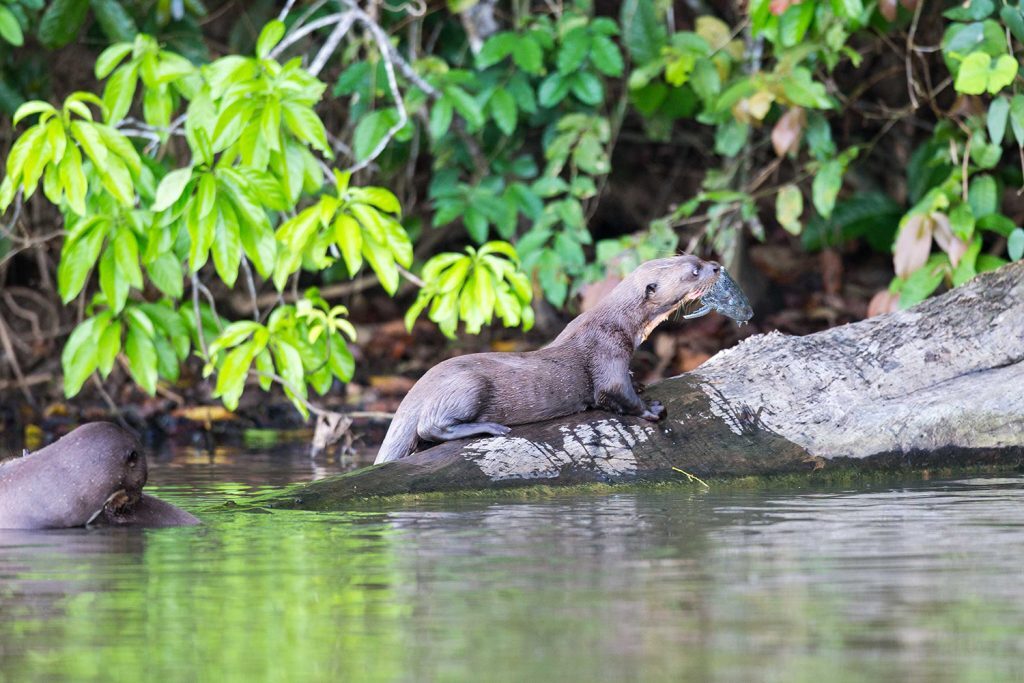
Share


 a Group Tour
a Group Tour  a Tailor Made Tour
a Tailor Made Tour 